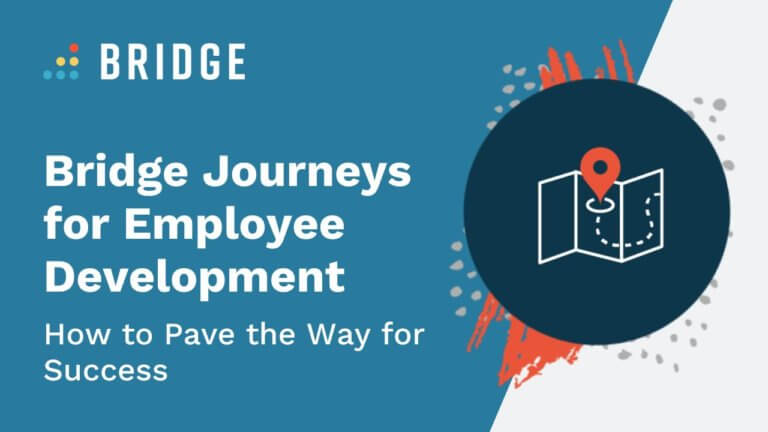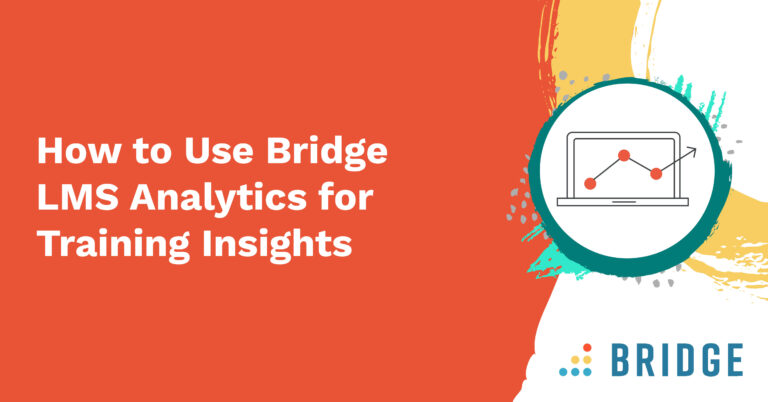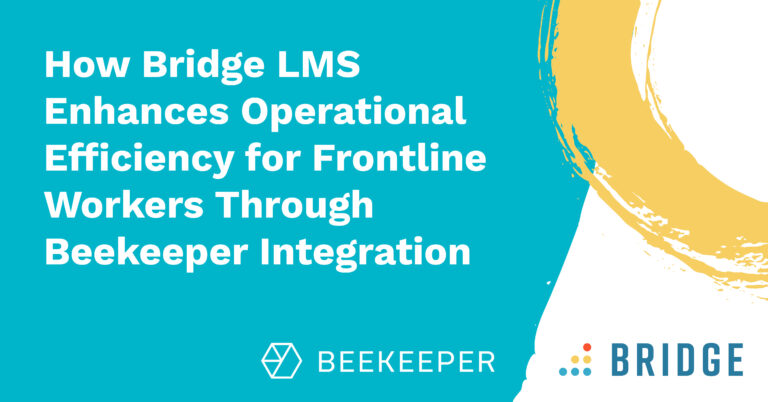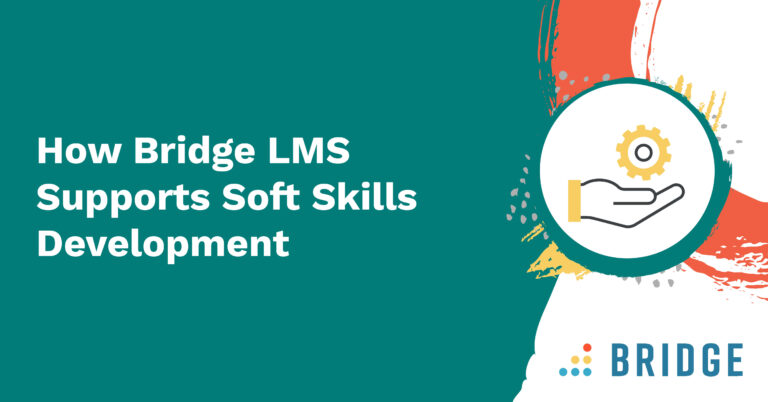There’s no doubting that continuous learning and development opportunities keep your organization competitive and your people performing at their best. However, supporting employee development requires ongoing planning, strategy, and the tools to grow your people. Sounds complex and hugely time-consuming, right? It doesn’t have to be!
Bridge Journeys helps organizations refine training programs and achieve greater results by delivering high-quality content in clear and actionable steps.
5 Ways to Create Effective Learning and Development Outcomes With Bridge Journeys
Bridge Journeys is an intelligent way to manage custom learning and development paths with well-paced delivery of information over a predefined timescale. Automated learning workflows keep employees on track with updates and obligations while providing content tailored to career goals.
By controlling the release of steps and breaking down content into chunks, training fits seamlessly into the flow of work, giving learners the space to complete tasks over an extended period.
Here are five ways Bridge Journeys can enhance learning processes to support a culture of continuous learning and skills development, and simplify complex training programs.
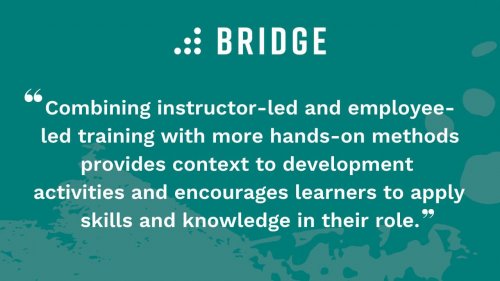
1) Continuously Add New Steps to Learning Journeys
Staying up to date with industry trends, best practices, and role-specific information is a must for all employees. Managers can facilitate ongoing learning by weaving together elements from the Bridge Learning Library, including courses, programs, live training events, and task-based checkpoints. Creating fluid journeys within Bridge means items can be continuously added or updated without an endpoint, encouraging ongoing learning and sharing.
Building non-linear journeys with the freedom to complete steps in any order gives enrolled users more exposure to learning items. It also means that new hires, employees who are interested in a horizontal promotion, or learners who are developing cross-functional skills can view the same items as they’re added without having to complete a number of steps beforehand.
The option exists to make publishing and updating course content as simple or granular as needed based on learners’ needs. Admins have complete control at every step and can publish Journeys updates to all learners, or they can select only newly enrolled users or learners still in progress.
FIND OUT MORE ABOUT AUTOMATED MICROLEARNING | ‘Beating Burnout: Why Microlearning Is a Must for Time-Poor Teams’
2) Combine Employee-Led and Experiential Training to Enhance Development
Some of the most impactful learning experiences can happen outside formal training programs, such as day-to-day interactions with peers or conversations with managers. Combining instructor-led and employee-led training with more hands-on methods provides context to development activities, encourages learners to apply skills and knowledge in their roles and learn from peers, managers, and experts outside their team or department.
Journeys can include enrollment in people-related tasks for learners to showcase progress and receive targeted feedback. The ability to strategically schedule feedback requests and performance conversations ahead of time gives learners the space to test skills, gather evidence, and reach out for advice on where they excel and where there’s room for growth by observing on-the-job performance.
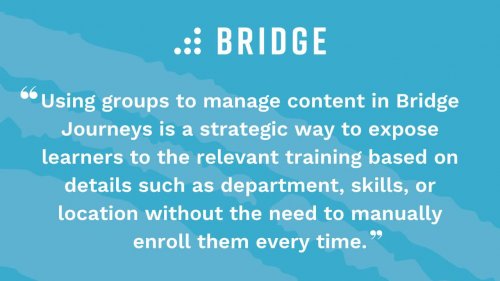
THE POWER OF LEARNING AND PERFORMANCE | ‘Next Steps With Bridge Journeys: 3 New Features That Take Your Learners Further’
3) Tailor Training for Specific Roles and Departments With Smart Groups
Just as every employee will need different training to achieve their career goals, it’s likely that their needs differ when it comes to compliance and credentialing requirements. Though managing individual and department-specific compliance and credentialing requirements can be a manual process, building automated groups that are fluid based on a user’s values within certain fields—known as smart groups—makes it easier.
Using smart groups to manage and assign content in Bridge Journeys is a strategic way to expose learners to the relevant training based on details such as department, skills, or location without the need for manual enrollment each time. By defining the rules for each group, you’ll control what content learners see and when they see it. Assigning content to groups creates experiences targeted specifically to the learner and means they’re only exposed to the materials they need.
Once a journey is created and assigned, authors and admins can swiftly respond to training needs by rolling out updates to groups. Since groups can be based on multiple conditions, it grants a level of customization that accounts for conditions such as location-based compliance differences or shorter deadlines for new hires completing training as part of onboarding.
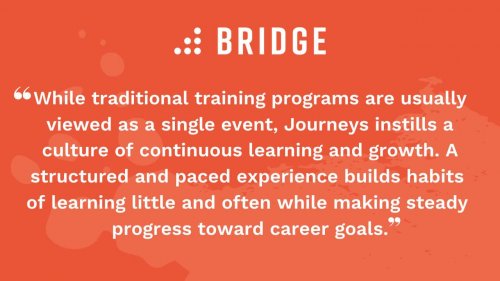
HOW TO LEVERAGE TECH TO DEVELOP SKILLS | ‘How Personalized Learning Enhances Employee Skills Development’
4) Use Analytics to Improve Learner Outcomes
Comprehensive analytics and reporting show learner performance and allow managers to send deadline reminders and automate notifications for those who have fallen behind. It’s an effective way to keep learners progressing and reinforce learning habits without constantly checking in on who’s doing what.
Behind the scenes, Bridge Journeys can uncover a wealth of information. Deep dive into the data using the Journeys Analytics dashboard to sort and segment results, explore how individuals or teams interact with content, and measure the training outcome. With in-depth analytics at your fingertips, you can gain insight into the impact and value of journeys, such as:
- The learners who spend the most time developing skills
- The training types learners find most valuable
- How well they retain and use information
By filtering data into groups, you’ll spot trends on individual or department levels, like skills gaps or missed deadlines. You can use these metrics to tweak courses and amend content based on need. Analyzing results keeps training purposeful, fuels growth, and maximizes business performance.
CREATE A CULTURE OF LEARNING | ‘Your Employees Are Busy—Here’s How to Offer Protected Learning Time’
5) Reinforce Goals and Objectives to Increase Knowledge Retention
While traditional training programs are usually viewed as a single event, Bridge Journeys instills a culture of continuous learning and growth. Instead of being force-fed the same content, learners engage with a variety of training formats in manageable intervals. A structured and paced experience builds habits of learning in manageable chunks while often making steady progress toward career goals.
Items can be scheduled ahead or unlocked after completing a previous action, allowing learners to digest information, demonstrate progress, or discuss training to ensure they understand objectives before advancing.
Learners can see the entire content set, including actions and due dates. This way, they always know what’s ahead, how much time they have to complete required training, and whether they’re on track with their goals. Following up on courses with assessments and quizzes can highlight progress, reveal any areas for development, and keep skills sharp if it’s been awhile since completing training.
Bridge Journeys helps managers and admins to identify and respond to learner needs, set a one-on-one cadence to discuss development, review performance goals, and direct future training based on assessment results and scores. Automating reminders and meetings keeps channels of communication open, which in turn means development conversations never fall by the wayside and are always productive.
MORE WAYS TO USE BRIDGE JOURNEYS | ‘5 Ways to Achieve Better Employee Onboarding With Bridge Journeys’
Transform Learning and Development With Bridge Journeys
Managing training needs, building good learning habits, and developing skills throughout your organization requires a powerful tool. You’ll find all you need to start using Bridge Journeys in the ‘Author’ menu if you’re an existing Bridge customer.
If you’re not yet a Bridge customer, reach out to see how our learning and performance management tools can drive growth.
